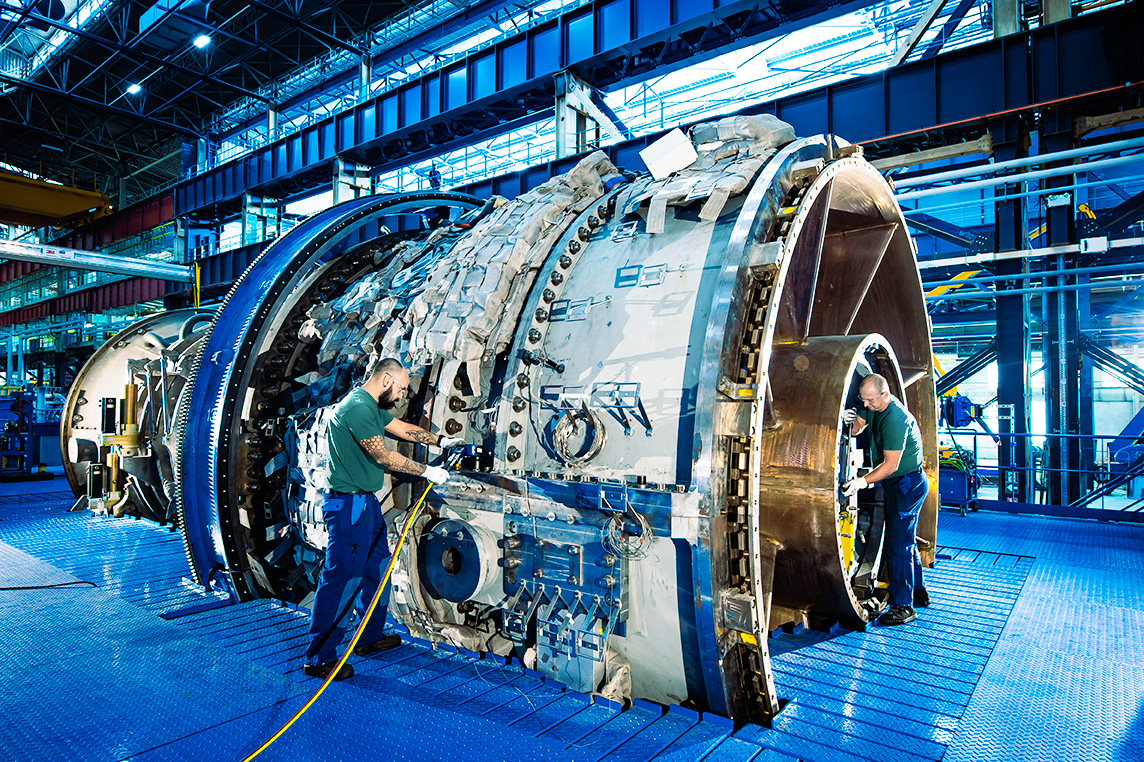Humans by nature are resource maximizers. Doing more with less — the essence of efficiency — is one of our oldest games. The economist Adam Smith thought deeply about the matter, which is why he is credited with devising the division of labor: the insight that better organizing factory worker tasks, rather than hiring more workers, is just as effective. But efficiency, which is a ratio, must be correctly understood. In the field of engineering, for example, few human inventions are more efficient than the bicycle, whose weight and low rolling resistance require few caloric inputs from the rider. And yet, not every machine can be as perfect as a bike.
Efficiency experts at GE Vernova are also thinking hard these days about this same important ratio: the inputs, versus the outputs, of energy. That matters when you are sitting on top of a massive installed base of power equipment, one that generates about 25% of the world’s electricity. David Pozo, global distribution, industry, and power generation product line leader at GE Vernova, and Sylvain Beaux, grid automation energy efficiency product manager at GE Vernova, are today using sophisticated analytical inspection software to sweep through the company’s manufacturing floors and the power plants of its customers, hunting for ways to save energy. The results so far have been spectacular.
The ongoing effort falls under one of the four key sustainability mandates GE Vernova has set for itself as it seeks to be a conscientious partner to the world’s energy transition. Pozo, based in Spain, and Beaux, based in France, stress that while conservation and using fewer resources is a worthy goal, efficiency is about getting the same or better outputs with fewer inputs. That’s the game.
“We need to understand — and the whole point is — that as a society we want to maintain our lifestyle as of today with as little energy as possible,” says Pozo. “From a manufacturing perspective, it’s pretty much the same. We want to continue producing the same goods and satisfying customer needs, with the minimum energy possible.”
One of the efficiency team’s biggest projects of late took place at a historic manufacturing plant in Belfort, France, that has its roots in the 19th century. Today that site produces some of the largest steam turbines for the global nuclear industry, and it has been providing France with such equipment for more than 50 years, according to Beaux. Using GE Vernova’s Energy Efficiency Solution (ESS) software, large plants of this size are fitted with sensors, IoT (Internet of Things) devices, and other monitors, which start the analytical process as data is fed to a collection bin. “The installed technology gathers data automatically, creating billions of measurements all across the system, and then we do the data mining, using AI, and look into where the opportunities are,” says Beaux.
Today’s manufacturing and power plants are so large — some up to two square miles — that it’s no longer possible to do a “walk-through”–type inspection. And as Beaux points out, even if it were possible, this method would no longer make sense, given the complexity of operations, in which electricity, natural gas, water, compressed air, and other inputs are flowing in myriad directions. What the team found at the Belfort factory was somewhat surprising: Instead of inefficiency in the plant’s largest machines, it was actually smaller machines, performing lesser tasks, that were the culprit. This brings to mind another historical economist, Vilfredo Pareto, who also worked on efficiency and made the discovery that in many systems, 20% of the components are often responsible for 80% of the gains — or, in the case of Belfort, most of the losses. More than three years after fixing, streamlining, and replacing equipment, the plant at Belfort has achieved an impressive 26% energy savings in one year, according to Beaux. “This has been equivalent to the annual consumption of 1,000 homes in the U.S.,” he says.
As the energy transition rolls onward, the stakes in the waste-busting game couldn’t be higher. Many of the world’s industrial processes are in fact needed to create wind blades, solar panels, turbines for nuclear plants, transmission wires, and the gas turbines that will burn hydrogen. As Beaux points out, electricity bills for such large facilities can run into the millions per year. That high cost in money terms is a proxy for the energy required to run these crucial operations. So saving money may be the headline, but saving energy, and thus emissions, is the real goal. GE Vernova itself, according to Pozo and Beaux, seeks to become carbon neutral by 2030 in its own operations (Scope 1 and 2).
Decades ago, the energy guru Amory Lovins, who started the Rocky Mountain Institute think tank, coined the term “negawatts.” Lovins reasoned that with all the time we spend measuring megawatts, we needed a companion term to measure energy that we save. Lovins’ Negawatt Revolution (PDF) was, at the time, a breakthrough, cutting-edge idea. Now getting on in years and retired from the game, he would surely be pleased to see how far his idea has traveled.
Top: Workers service a component at the Belfort plant in France
